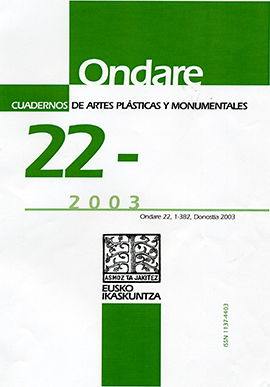Platos limosneros en Gipuzkoa

MIGUÉLIZ VALCARLOS, Ignacio
- Publication year:
- 2003
- Publication place:
- Donostia-San Sebastián
- ISSN:
- 1137-4403
Summary
Charity plates are liturgical objects in which the alms given by churchgoers in the religious celebrations were collected. Their origin goes back to the Valley of the Moselle and above all to the Belgian town of Dinant-sur-Meuse. There in after they were to be manufactured throughout the rest of Europe. Generally made of brass, most of them date back to between the 15th and 16th centuries. Tipologically, they are circular plates of great size and little depth, with a flat gold-plated border, a concave field and emblem. Iconographically, they are typically decorated with vegetation-inspired trimmings and inscriptions, generally formulations of benedictions, surrounding to a central medallion with an iconographic topic, either with representations of people or vegetation.Sing up and download the publications of Eusko Ikaskuntza
Are you a registered member?. Access




